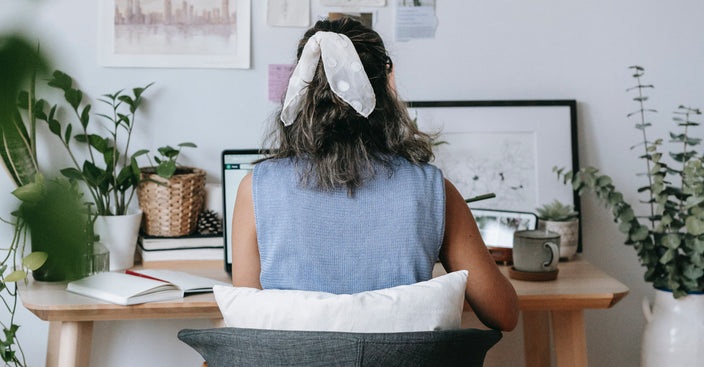Many factors play into a healthy and positive working environment. Everything from noise levels to indoor climate can take a physical and mental toll on your health and well-being.
Your working area is an excellent place to start regarding specific and manageable changes that you can implement without needing more comprehensive input from colleagues and management. So let’s begin by taking a look at your workstation:
1. Your chair should be adjustable and fit, so it matches your needs and provides proper supports on your back. We recommend that you sit with your feet resting flat on the floor while keeping your ankle, knee and hip joints at an angle of at least 90 degrees.
2. Your screen should be tilted slightly away from you, with the top approximately at eye level. To find the right distance between you and the screen, sit up straight and stretch your arms out in front of you. When your fists touch the screen, you have the proper distance.
3. Your desk should be height-adjustable and enable you to alternate between a seated and standing working position. Your arms should rest on the desk, with your elbows at a 90-degree angle.
4. The lighting should preferably be adjustable and positioned not to dazzle or make you squint your eyes.
5. The keyboard should be low and narrow, which prevents you from straining your wrists and arms. Find a keyboard with a negative tilt to minimise strain on fingers and the back of your hands. The keyboard should be in what we call “the ideal working area”, which is the area your hands can easily reach while your elbows are kept close to your body.
6. Your mouse should allow variation in your movements. Find an adjustable mouse that you can adapt to suit you, or use a centred mouse to provide support and enable you to work within “the ideal working area”. See an illustration of this below.

To find the ideal working area, keep your elbows close to your body. Everything you can reach with your hands in this position is in the perfect working zone. Your primary work equipment should be within this area. Gear you use less often should be in the yellow area. Here, you should reach quickly with your arms but without twisting or stretching your body. Your equipment should not be in the red zone, where you keep lights, plants, and similar objects that you do not need to use daily.
Once your workstation and immediate working area are comfortable for you to work in, you can turn your attention to the broader working environment in your office. Try to achieve some variation in your routines throughout the day, as this also promotes your well-being and performance at work.
Check out our five easy steps for a varied workday.




